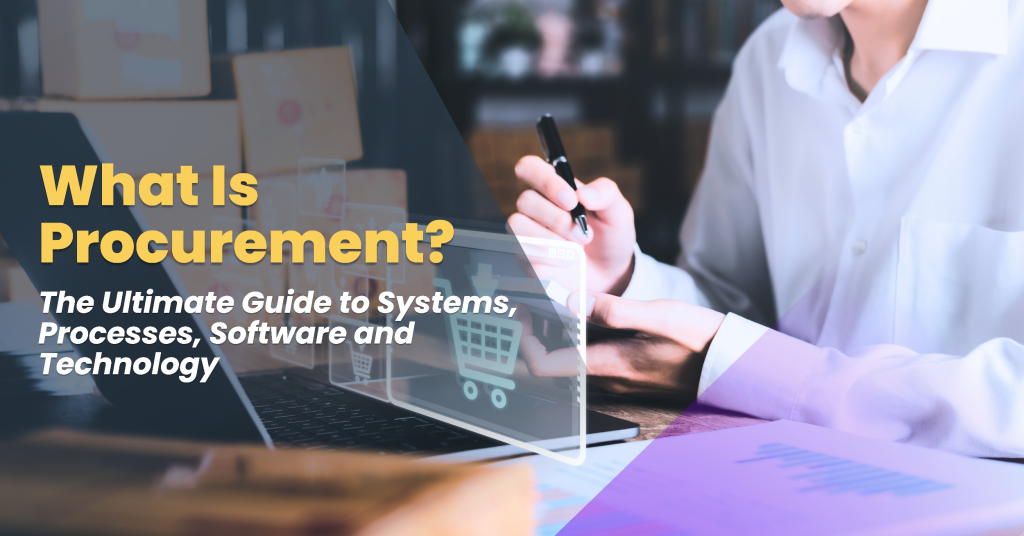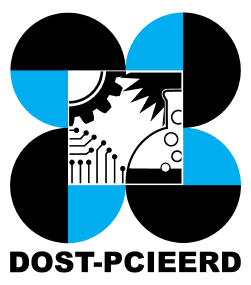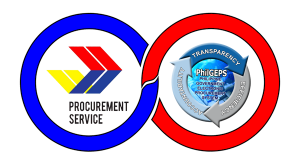Procurement plays a crucial role in business operations, focusing on acquiring the necessary goods and services for a company. Effective procurement helps ensure that materials are available on time and at optimal costs. With advancements in technology, procurement processes have become more efficient, automating tasks and improving supplier management. Learning how to navigate modern procurement systems can lead to better cost control and more informed decision-making.

What is Procurement?
Procurement refers to the process of acquiring the goods and services a business needs to operate. It involves identifying business requirements, sourcing suppliers, negotiating contracts, and ensuring timely delivery of products.
The goal is to obtain the best value for the business, considering cost, quality, and reliability. While some companies limit procurement to purchasing tasks, others see it as a broader function that includes supplier management and payment processing.
What are the Types of Procurement?
- Direct Procurement: This involves sourcing goods and services directly related to production. These include raw materials, components, and machinery that directly impact a company’s ability to produce and sell products.
- Indirect Procurement: Items like office supplies, utilities, and services that support daily operations but are not part of the production process fall under indirect procurement. While they don’t affect revenue directly, they are essential for smooth business operations.
- Goods Procurement: This type focuses on acquiring tangible products, from raw materials to finished goods. It applies to both direct and indirect procurement.
- Services Procurement: This includes acquiring professional services like legal counsel, IT support, or marketing agencies. These services are essential for managing operations and filling skill gaps.
Why Procurement Matters?
Procurement plays a significant role in a company’s cost structure. Securing materials at competitive prices can greatly influence profit margins. Beyond cost savings, procurement ensures product quality by selecting reliable suppliers. It also helps businesses align their purchasing activities with their overall goals, whether that’s improving efficiency, ensuring sustainability, or managing risk.
Does Procurement Help in Risk Management?
Managing risk is a crucial function of procurement. Risks can arise from unreliable suppliers, regulatory changes, or unexpected global events. A well-organized procurement process helps identify these risks early and implements strategies to mitigate them, ensuring business continuity and avoiding costly disruptions.
Is Procurement More Sustainable and Ethical?
As companies become more aware of environmental and ethical concerns, procurement departments are tasked with ensuring that suppliers adhere to sustainable and ethical practices. This includes monitoring environmental impact, fair labor practices, and compliance with industry regulations.
What are the Activities in Procurement?
- Identifying Needs: Procurement starts with determining what goods or services are required, based on market demand and inventory levels.
- Budgeting: Before any purchase, a budget is established to ensure that the business can afford the required goods or services.
- Market Research: Identifying and evaluating potential suppliers is crucial. This involves researching vendors to ensure they meet quality, price, and delivery requirements.
- Negotiating Contracts: Procurement teams negotiate terms to ensure the company gets the best value, whether through pricing, payment terms, or delivery schedules.
- Supplier Management: Building and maintaining good relationships with suppliers is key to ensuring ongoing reliability.
- Quality Assurance: Once goods are received, the procurement team ensures they meet the required standards.
How Can a Company Implement a Procurement Strategy?
Procurement as a Corporate Strategy
Procurement goes beyond simple transactions, it directly impacts a company’s overall strategy:
- Aligning with Corporate Values: The choice of suppliers reflects the company’s identity. For example, businesses that prioritize sustainability must choose suppliers who share similar environmental values.
- Influencing Market Position: The vendors a company chooses can affect its competitiveness. For instance, selecting a reliable supplier can ensure timely production, giving a business an edge in the market.
- Human Resources: The procurement team’s skillset can greatly impact the efficiency of the procurement process. Having the right talent ensures smooth operations and better vendor negotiations.
What is the Difference Between Procurement and Purchasing?
Procurement vs. Purchasing
While often used interchangeably, procurement and purchasing are distinct processes:
- Procurement is the strategic process of sourcing, negotiating, and managing suppliers to meet the company’s needs. It involves understanding market conditions, selecting vendors, and ensuring the supplier relationship adds long-term value.
- Purchasing is a subset of procurement focused on the transactional side. It’s about placing orders, receiving goods, and processing payments. Purchasing is tactical, focusing on getting the goods or services into the business efficiently.
What is the Role of Suppliers in Procurement?
Suppliers play a significant role in both procurement and purchasing processes. Procurement teams focus on building long-term, strategic relationships with suppliers to ensure reliability and value.
Meanwhile, purchasing teams concentrate on managing the transaction and getting the right product or service at the right time and price. Both roles are essential for successful supplier performance management, which ensures that the company gets the most value from its suppliers.

What is the Difference Between Procurement and Sourcing?
Procurement is a broad process that includes sourcing as one of its key steps. Sourcing involves identifying and evaluating potential suppliers for the goods and services a business needs. During this phase, factors like cost, quality, supplier reliability, certifications, and potential risks are considered. Unlike procurement, which manages the entire purchasing cycle, sourcing focuses solely on finding the best suppliers.
How is Supply Chain Management Different from Procurement?
Supply chain management and procurement often get confused, but they handle different parts of a company’s operations. Once procurement is complete, supply chain management takes over to manage the transportation, distribution, and sales of finished products. At the same time, procurement focuses on acquiring what the business needs and supply chain management ensures that those goods make it to customers efficiently.
How Do Digital Procurement Platforms Work?
Digital procurement platforms automate the entire procurement cycle, from sourcing to payment. These platforms allow businesses to centralize supplier catalogs, streamline approval processes, and track purchase orders in real-time. The main benefits of these platforms are reducing manual errors, improving transparency, and ensuring that procurement aligns with company policies and budgets.
What Are Expense Analysis Solutions in Digitized Procurement?
Expense analysis tools help businesses track and analyze spending across different departments. By providing detailed insights into cost patterns, these solutions allow companies to identify inefficiencies, prevent overspending, and optimize budgets. With real-time tracking, businesses can adjust procurement strategies to reduce costs and manage overall spending effectively.
How Do Digital Procurement Platforms Help Vendor Management?
Vendor relationship management (VRM) in procurement software enhances collaboration between businesses and their suppliers. It centralizes communication, tracks supplier performance, and manages contracts. By ensuring compliance and reducing risks of supplier disruptions, procurement software helps businesses maintain strong relationships with suppliers and improve procurement efficiency.
How Can Businesses Improve Sourcing Strategies through Digitized Procurement?
Sourcing strategy through digitized procurement simplifies the workflow in identifying, evaluating, and selecting suppliers. It uses automated tools to compare suppliers and manage bids, ensuring that businesses secure the best terms and conditions. By improving the strategic sourcing process, these tools help businesses reduce costs and increase procurement value.
Can Digitized Procurement Platforms Offer Online Bidding?
Online bidding and reverse auction tools allow businesses to foster competition among suppliers. These platforms offer real-time price updates and speed up negotiations, allowing businesses to secure better deals. By encouraging competitive bidding, these tools maximize procurement value and reduce costs.
Does Digitized Procurement Help in Contract Lifecycle Management (CLM)?
It ensures compliance, tracks contract milestones, and reduces risks related to supplier contracts. With CLM tools, businesses gain greater control over contract terms, improving supplier relationships and reducing the chances of disputes.
Are Procurement Platforms Similar to Supply Chain Automation Systems?
Supply chain automation systems integrate procurement and logistics processes, such as inventory management and order fulfillment. By reducing manual intervention and improving coordination across departments, these systems help businesses minimize delays and operational costs. This makes the entire supply chain more efficient.
While not all platforms offer this feature, there are top-notch software solutions like Quotable that offer all the tools needed in procurement, purchasing, sourcing, and management of contracts.
What are the Benefits of Quotable in the Procurement Workflow?
- FREE for MSMEs
- Invite Existing or New Suppliers
- Get Live Quote Requests
- Compare Top Quotes
- Share for Approval
- Streamline Purchasing & Sales
- Add your Team to Manage
Do Procurement Platforms Offer Procure-to-Pay Solutions?
Procure-to-pay solutions automate the entire purchasing cycle, from requisition to supplier payment. These tools ease workflows, reduce processing times, and provide real-time tracking of procurement activities. Procure-to-pay systems improve compliance and reduce operational bottlenecks, allowing businesses to manage their purchasing cycle more effectively.
As previously mentioned, not all procurement platforms offer the key elements needed by businesses. Luckily, Shoppable is a top-tier B2B procurement platform that offers all the features needed by businesses from quotation to order fulfillment.
Main Points
Effective procurement is about more than just making purchases, it’s a strategic function that influences a company’s success. From selecting the right suppliers to managing relationships and ensuring quality, procurement plays a vital role in helping businesses achieve their goals and maintain a competitive edge.
Simplify your procurement workflow with Shoppable’s newest tool, Quotable! This FREE and user-friendly software is designed for MSMEs in the Philippines.
See how Quotable can ease your business operations by visiting









